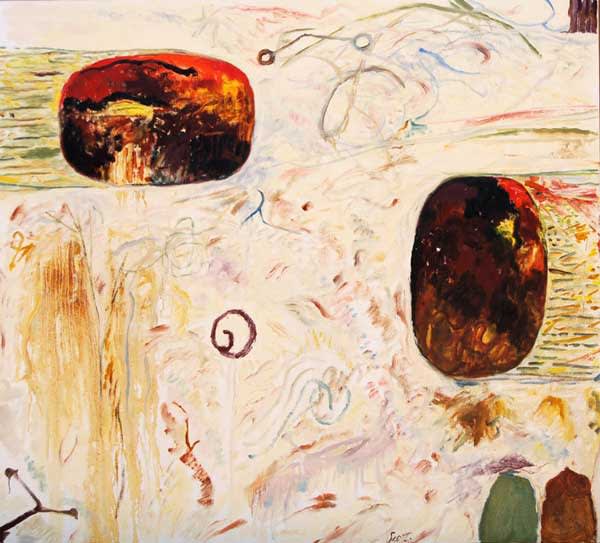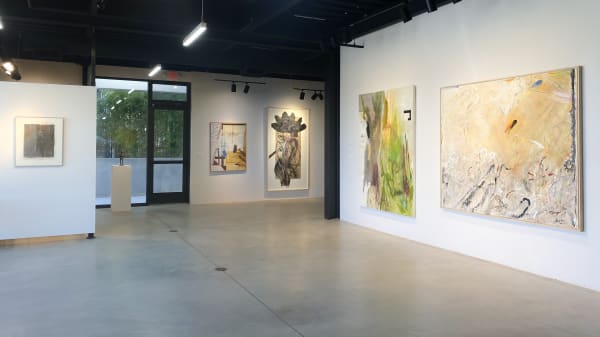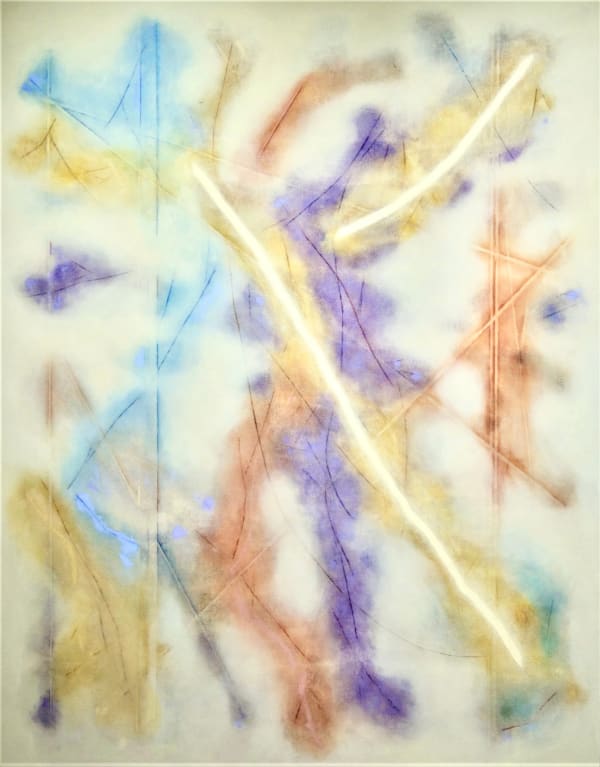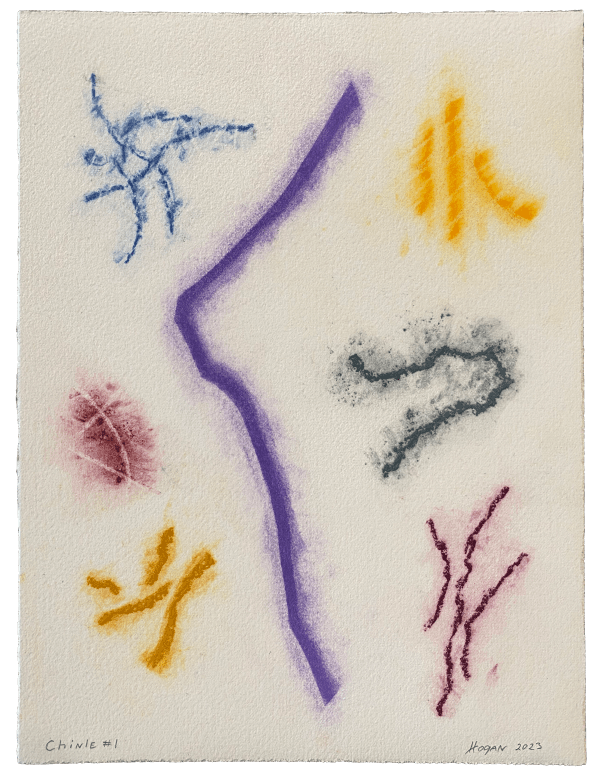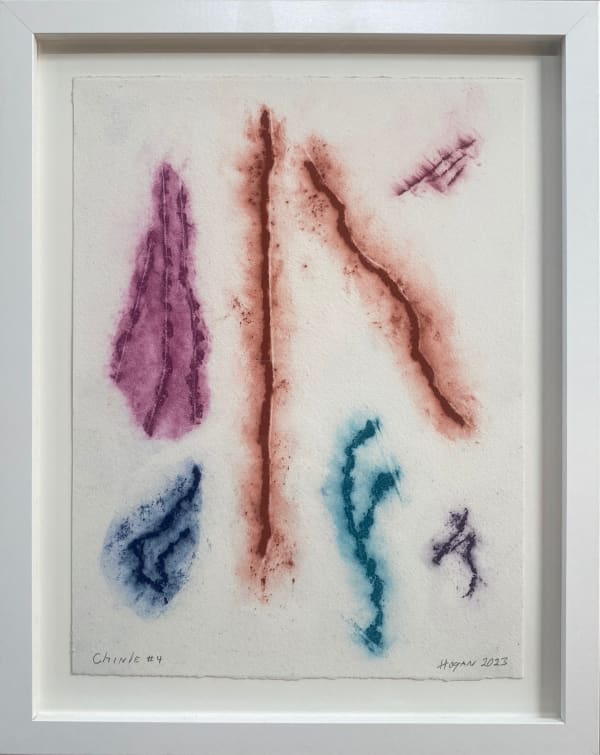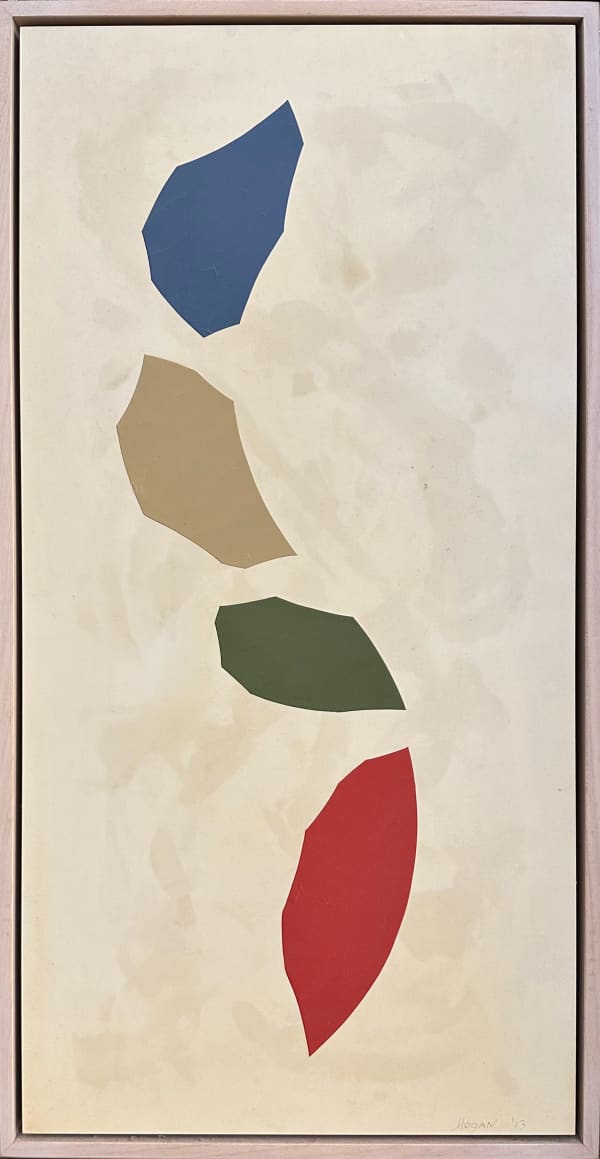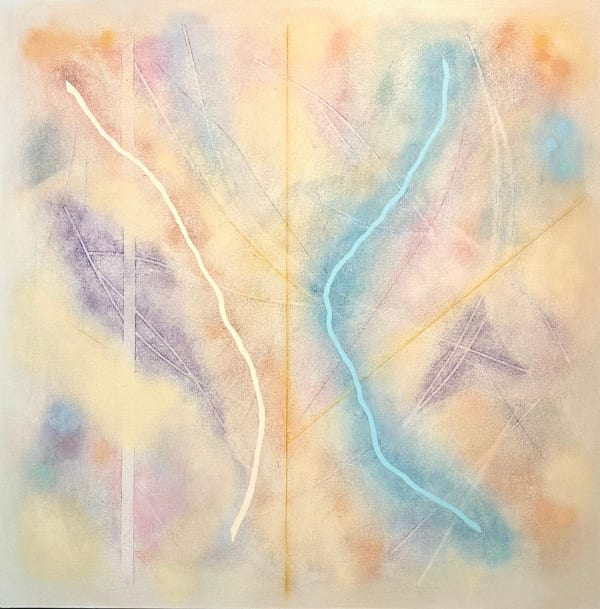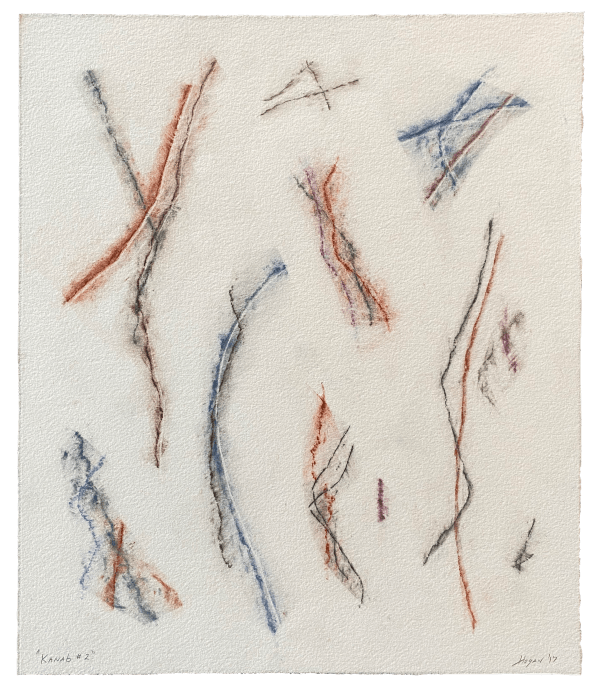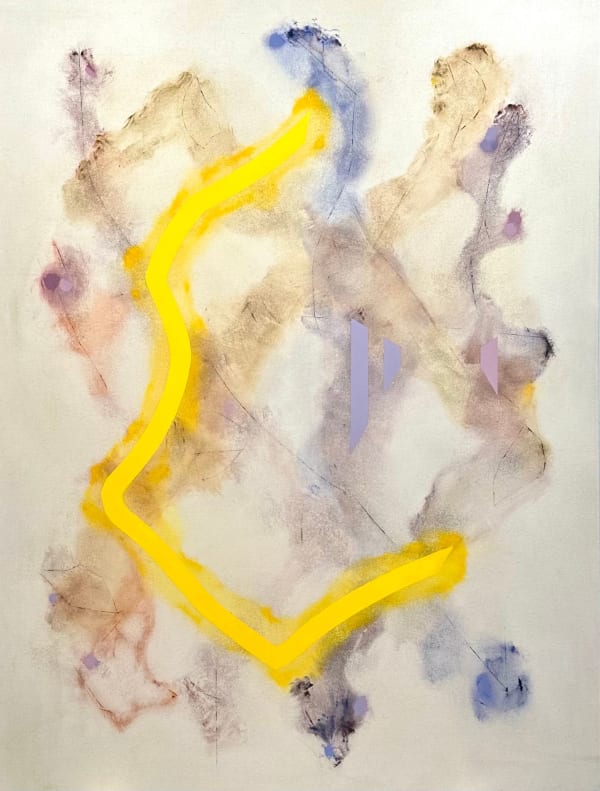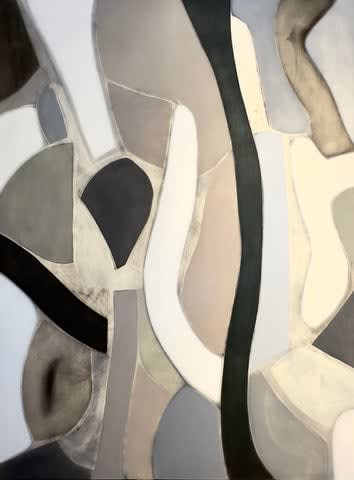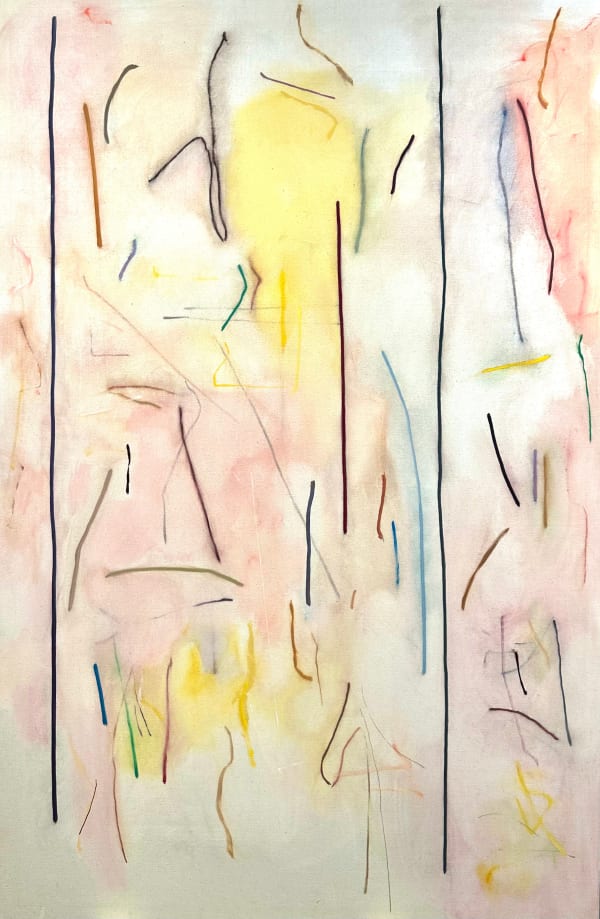Richard Hogan, born in 1941 in Youngstown, Ohio, came to New Mexico as a child when his parents settled in Albuquerque’s Southeast Heights. He was immediately struck by the vast open space of New Mexico, and space would become a major factor in his painting. In 1979 he shifted from a representational style with isolated figures influenced by Francis Bacon to a fully abstract approach restricted to inscribing a few isolated lines. Addressed to the vertical viewer standing in front of the canvas, these lines articulate a bodily apprehension of space as a visual field, which opens like cinema before our eyes. Over time the lines grew in thickness and color and were variously rubbed out and restruck. In the 1990s and early 2000s, the paintings became spare and restrained, their marks often evoking paleolithic cave etchings. Marks also thickened into shapes that separated into matte patches with honed edges, like Celtic monoliths. Later works darkened as their fields turned foggy behind a few emphatic linear shapes and their rubbed-out colors faded into delicate Rococo traceries.
Hogan received his BA and MA from the University of New Mexico in 1962 and 1967, respectively. His work since has been in the permanent collections at the Capital Art Collection, State Capital, Santa Fe; Museum of Fine Arts, Santa Fe, NM; the Albuquerque Museum, Albuquerque, NM; the Sheldon Memorial Art Gallery, Lincoln NE; the Roswell Museum, Roswell, NM; and the Santa Fe Community College Collection, Santa Fe, NM.
 Richard HoganYellow Creek, 1981oil on canvas84 x 54 in.
Richard HoganYellow Creek, 1981oil on canvas84 x 54 in.




